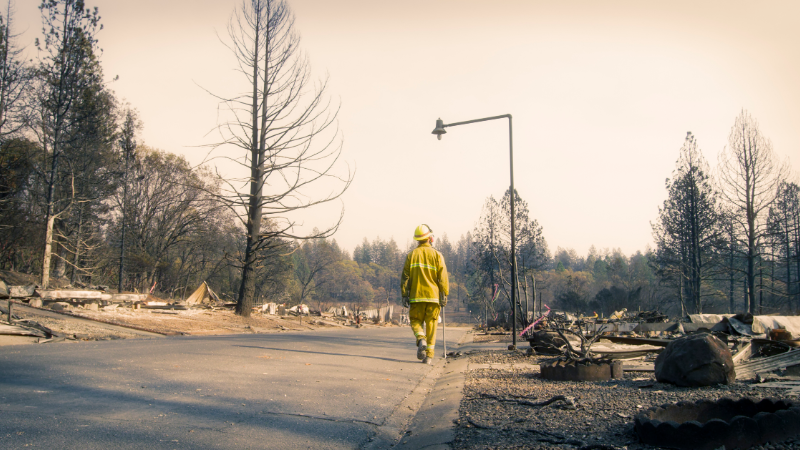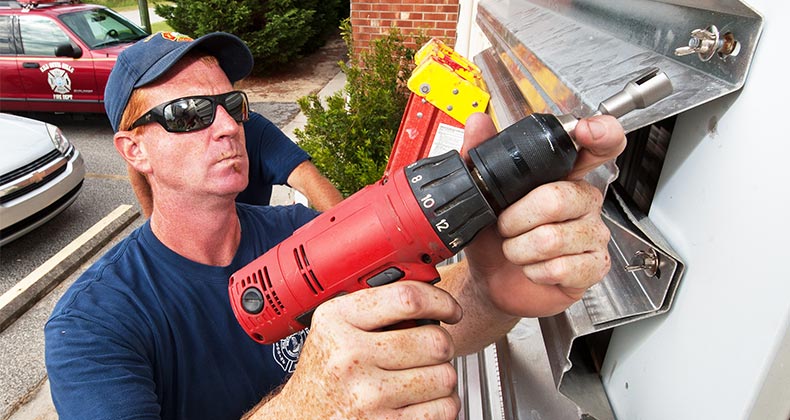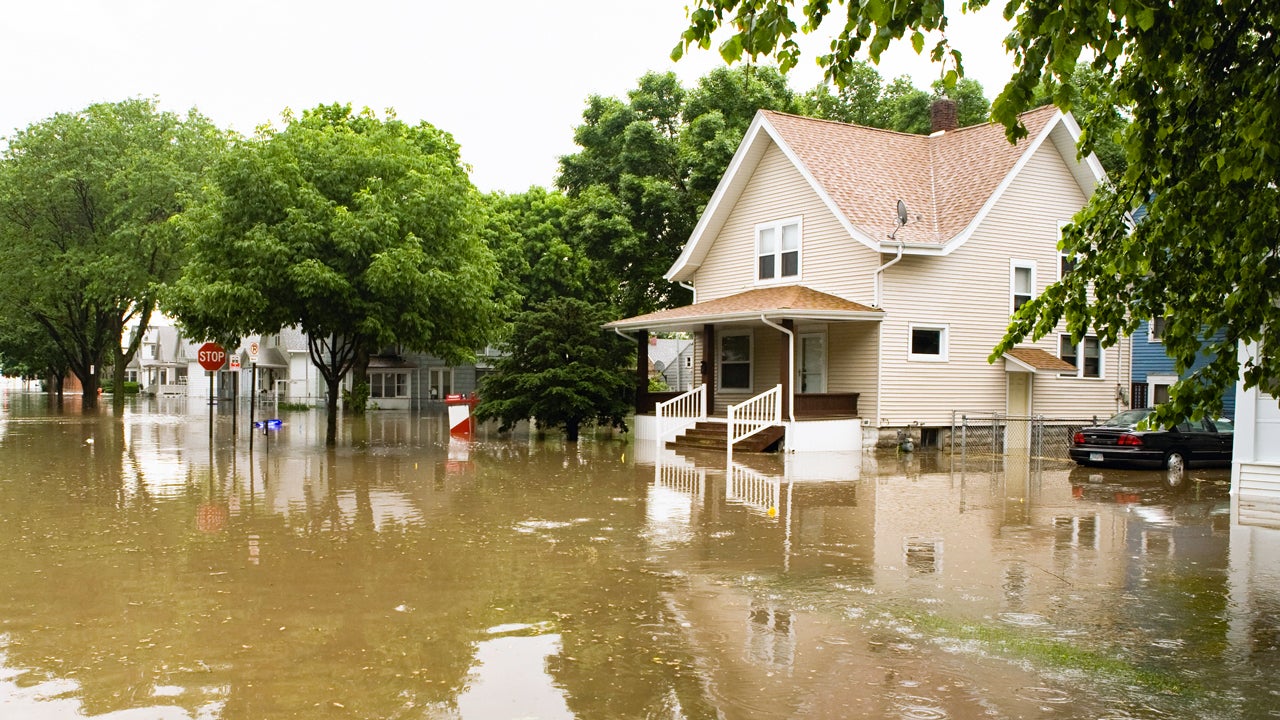How to protect your home from wildfire




Key takeaways
- Protect your home: Consider installing fire-resistant materials where possible, including noncombustible decking materials, a fire rated-roof, safer windows and fire-resistant landscaping.
- Develop an evacuation plan: Decide how your family will evacuate in the event of a fire and create an emergency supply kit.
- Read your homeowners insurance policy: Most home insurance policies offer wildfire coverage, but if you live in a high-risk area, you may need to purchase additional coverage.
It’s not just your imagination; wildfires are getting worse. From 1971 to 2021, human-caused climate change has contributed to a 172 percent increase in burned areas. When you look at just 1996 to 2021, that figure jumps to 320 percent. The same study found that, in the coming decades, the average annual forest burned areas is expected to increase anywhere from 3 to 52 percent.
As of June 2024, the National Interagency Fire Center reports that there have been 17 total large fires and around 183,000 acres burned.
Whether or not you live in a high-risk state, understanding wildfire safety and how to protect your home from wildfire is becoming more critical than ever. Bankrate’s editorial team compiled a simple guide to help you protect yourself, your property and your finances against wildfires.
How to protect your home from wildfire
Even if you live in a wildfire-prone area, there are steps you can take to reduce the chance of damage to your home. Preparing your home for wildfire season may mitigate damage in the event of a fire.
Create defensible space
Defensible space describes the area around a building specifically designed to slow the spread of wildfire by reducing fire hazards. Defensible space is broken down into three zones, defined by their distance from your home. Below, Bankrate’s insurance editorial team provides tips on preparing each zone to be as fire-resistant as possible.
Zone 1
Zone 1 encompasses the ground between zero and five feet from your home. This space may include landscaping, shrubbery, gutters, roofing and windows. You can generally expect to spend the most time fire-proofing Zone 1, as it typically includes the highest concentration of items.
To create defensible space that decreases wildfire risk in Zone 1, you may want to:
- Use non-flammable construction materials like cement and stone.
- Avoid storing propane tanks against or underneath your home.
- Install a Class A fire-rated roof.
- Install safer windows, with multi-pane tempered glass, and window screens that protect against floating embers.
Zone 2
Zone 2 includes the property between five and 30 feet from the home. Common hazards in this area include yard vegetation, dry leaves and landscaping.
You can help mitigate fire hazards in Zone 2 by:
- Clearing your yard of vegetation and debris and removing dry leaves and overgrowth promptly.
- Installing noncombustible decking materials
- Laying mulch to surround your landscaping.
Zone 3
Zone 3 encompasses ground between 30 and 100 feet from the house.
In this area, you might want to consider:
- Utilizing a landscaping strategy that creates firebreaks by way of walls, pathways and flowerbeds made of stone.
- Planting drought-resistant landscaping
- Planting fire-resistant hardwood trees.
What causes fires?
Nearly 85 percent of wildfires in the United States originate from human activity. For instance, wildfires commonly start from abandoned campfires, bonfires, cigarette butts, arson or equipment malfunctions. Fires can also be caused by natural events such as lightning strikes and intensified during heat waves and droughts.
According to the U.S. Department of Agriculture Forest Service, fire season has extended from around four months to six to eight months in recent years. Even winter wildfire outbreaks occur.
Fire season has become more destructive and erratic. Most climate scientists point to the fact that the planet has increased about 2 degrees Fahrenheit since 1880 as a primary cause for these intensified fires. Fire suppression policies in place since the 1930s also created an abundance of fuel to exacerbate modern wildfires. Other effects of climate change that result in more wildfires are:
- Winter snows melting earlier
- Rain arriving later in the fall
- Extended drought
- The spreading of invasive, easily flammable species like cheatgrass
Determine whether your home is in a high-risk area
In the U.S., 4.5 million homes are at high or extreme risk for wildfires. The geographic area in which you live is one of the best predictors of your home’s wildfire risk. Although California is notorious for its devastating fires, most regions of the U.S. face wildfire risks. In 2023, Alaska, Arizona, Montana, Nebraska, New Mexico, Oklahoma, Oregon, Texas and Washington each lost more than 100,000 acres to wildfire.
States with hot, dry climates, like California and Texas, are conducive to wildfires, but climate is not the only factor. Homes within 2,500 feet of canyons, wildfire areas or brush areas are more susceptible to ignite, particularly during the hot, dry seasons. Using online tools like First Street Foundation’s Fire Factor model can help you determine if your home is at risk for wildfire.
The top 10 states with the most acres burned in 2023 are:
- California
- Alaska
- New Mexico
- Texas
- Oregon
- Arizona
- Nebraska
- Oklahoma
- Washington
- Montana
Click on each state below to see the number of acres burned due to wildfires in 2023.
If you live in a wildfire-prone area, your insurance premium will likely be higher. For example, if you purchase wildfire insurance in California, you’ll likely spend more than a homeowner in Maine. In some cases, homeowners may be denied coverage under their standard home insurance policy and instead be required to purchase a standalone policy. This may occur if your house is a long distance from the nearest fire department, for example.
How to prepare for wildfire season
Wildfires can move quickly. Establishing a plan for what you would do in case of fire may help you stay calm and safe during an emergency:
- Develop an evacuation plan for you and your family. Determine meeting points and alternate evacuation routes.
- Create a home inventory list. Keep a record of your belongings and their values to provide proof of loss and expedite your claim in the event of a wildfire.
- Put together an emergency kit: Gather essential medication, non-perishable food, water, pet food, flashlights and a portable radio.
-
Generally speaking, trees and shrubs that shed their leaves annually are more fire-resistant than evergreen plants. Ground cover plants with thick leaves, like aloe and other succulents, are also more fire-resistant than other plant types. Keep in mind that fire-resistant isn’t the same things are fireproof. While fire-resistant plants are harder to ignite and their foliage generally won’t contribute to fire intensity, they can still burn in a wildfire. Planting fire-resistant plants within 200 feet of your house can help create a defensible space which could help protect your home from a wildfire.
-
If the ground is hydrated, it is more resistant to fire. Harvesting rainwater and having a supply of water on-hand can help keep the ground near your home wetter and less likely to burn. You can use an online rainwater calculator to estimate how much water falls on your roof, and how much you can store for later use.
-
A Community Wildfire Protection Plan (CWPP) is created by local citizens, state and federal agencies, fire departments and volunteer organizations to help manage wildfire response and mitigation and to raise community preparedness. Since the Healthy Forests Restoration Act of 2003, communities are incentivized to create comprehensive plans that are customized for their unique needs.
Is wildfire damage covered by all insurance policies?
A standard homeowners insurance policy includes coverage for wildfire, but coverage may not be included in high-risk wildfire areas. Wildfires also go by other names depending on what region you live in. Home insurance usually also covers forest fires and brush fires. If you live in a high-risk area, some insurance providers exclude wildfire coverage from standard HO-3 policies. In this case, you may need to secure a standalone fire policy with a private insurer or through a state-run program. You may also need to be prepared to pay higher premiums compared to homes in areas that don’t face severe wildfire risk.
As a homeowner with a high-risk home, most insurance experts advise maintaining a continuous home insurance policy. Most home insurance companies issue moratoriums ahead of forecasted disasters, so securing coverage before the threat of a wildfire is present may be essential.
Frequently asked questions
You may also like

How to prepare your home for a natural disaster

How to prevent your home from flooding


